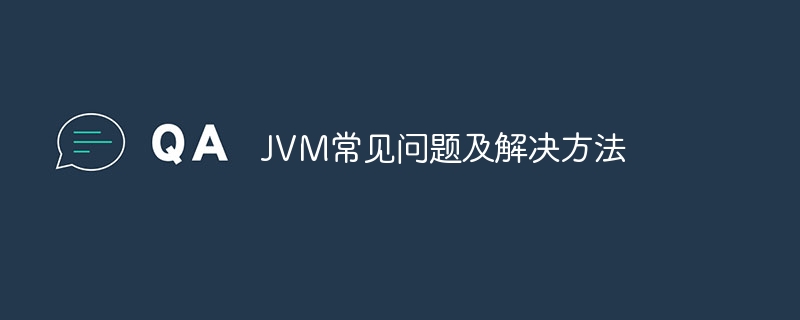
Solutions to common JVM problems: OutOfMemoryError: Increase heap space (-Xmx); optimize memory usage. Stack OverflowError: Reduce recursive/nested calls; optimize algorithms; increase stack space (-Xss). Class loading failure (ClassNotFoundException): Check class path; verify class loading mechanism; check for conflicting class names/versions. Deadlock: Avoid holding mutually exclusive resources for a long time; use deadlock detection tools; redesign the code. Low performance: optimize JVM parameters; analyze code bottlenecks; optimize code (reduce memory allocation, efficient algorithms).

JVM common problems and solutions
Preface
JVM (Java Virtual (Machine) is a software that provides a running environment for Java programs on different platforms. Unlike traditional compilers that compile directly into specific machine instructions, Java programs are compiled into bytecode and then interpreted and executed by the JVM. As a key component of program execution, the JVM may encounter various problems. This article will explore some common JVM problems and their corresponding solutions.
Problem 1: Memory Overflow (OutOfMemoryError)
Symptoms: The application crashes due to insufficient memory while running.
Solution:
To increase the heap space, you can specify the maximum heap size through the -Xmx parameter.
java -Xmx512m MyApp
Problem 2: Stack OverflowError
Symptoms:Due to too many nested method calls, the system stack space is consumed and collapse.
Solution:
To increase the stack space, you can specify the stack size through the -Xss parameter.
java -Xss512k MyApp
Problem 3: Class loading failure (ClassNotFoundException)
Symptoms: JVM cannot find a specific class, causing the application to Program startup or runtime error.
Solution:
.class files are included in the classpath. Problem 4: Deadlock
Symptoms:Two or more threads wait for each other to release resources, resulting in The application stopped responding.
Solution:
Issue 5: Low Performance
Symptoms: The application runs very slowly and has low responsiveness.
Solution:
Practical case
An OutOfMemoryError was encountered in a highly concurrent web application, resulting in frequent crashes. By analyzing the memory usage, it was found that the memory leak was caused by the cache collection not being cleaned correctly. By adding a cleanup mechanism and a regular cleanup strategy, this problem is solved and memory overflow is effectively prevented.
Conclusion
Mastering the solutions to these common JVM problems is critical to ensuring the stability and performance of your Java applications. Through regular monitoring, analysis, and appropriate adjustments, you can effectively prevent or resolve these issues and improve application reliability and efficiency.
The above is the detailed content of JVM common problems and solutions. For more information, please follow other related articles on the PHP Chinese website!
 python configure environment variables
python configure environment variables
 The difference between ms office and wps office
The difference between ms office and wps office
 How to change phpmyadmin to Chinese
How to change phpmyadmin to Chinese
 How to implement docker container technology in java
How to implement docker container technology in java
 How to enter BIOS on thinkpad
How to enter BIOS on thinkpad
 Introduction to input functions in c language
Introduction to input functions in c language
 HP notebook sound card driver
HP notebook sound card driver
 Usage of instr function
Usage of instr function




